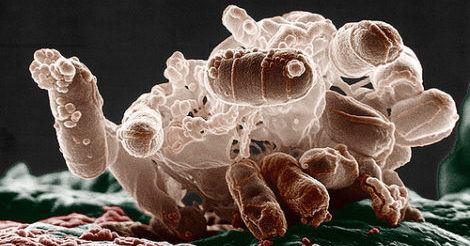
 )
)If science is the process of learning how nature works, what happens when we venture into territory nature apparently hasn’t explored yet? A pair of stories from the past week got me wondering about that. First up is an announcement about E. coli enhanced with two extra bases in their DNA. Ordinary DNA is made of four different chemicals abbreviated A, C, G & T; these bacteria have an extra two, abbreviated X and Y, scattered throughout their genome as well. Bacteria have been modified in this way before, but the changes didn’t last; now researchers have improved their technique–basically making even more modifications to the E. coli–so that the Xs and Ys persist over time and get passed on to daughter cells. Going forward, the hope is that this extended code can permit further engineering of bacteria to add features not found naturally.
Meanwhile, a team of physicists produced a new state of matter: space-time crystals. Familiar crystals have patterns that repeat in the three dimensions of space but are static in the time dimension. Space-time crystals change over time in a repeating fashion. Oscillating systems are not new; pendulums are a popular example. Space-time crystals are different because they oscillate in their lowest energy state. Consequently, while these crystals will move perpetually, they don’t represent a solution to our energy production needs. Extracting energy from a system requires the system to emit some form of radiation. Emitting radiation causes a system to shift into a lower energy state. In the pendulum case, if you want to use the energy from the swinging motion, eventually the pendulum will come to rest, a lower energy state. But the space-time crystals are already at their lowest possible energy configuration so they can’t emit any radiation. Creating this new state of matter opens up new possibilities for physics, but violating fundamental notions of energy conservation aren’t among them.
I’m curious how these two developments are perceived. While they come from very different disciplines, they both represent human innovation that go beyond natural precedent. How do you feel about that kind of research? And do you respond to both of these projects similarly, or do they inspire significantly different reactions?
Andy has worn many hats in his life. He knows this is a dreadfully clichéd notion, but since it is also literally true he uses it anyway. Among his current metaphorical hats: husband of one wife, father of two teenagers, reader of science fiction and science fact, enthusiast of contemporary symphonic music, and chief science officer. Previous metaphorical hats include: comp bio postdoc, molecular biology grad student, InterVarsity chapter president (that one came with a literal hat), music store clerk, house painter, and mosquito trapper. Among his more unique literal hats: British bobby, captain’s hats (of varying levels of authenticity) of several specific vessels, a deerstalker from 221B Baker St, and a railroad engineer’s cap. His monthly Science in Review is drawn from his weekly Science Corner posts — Wednesdays, 8am (Eastern) on the Emerging Scholars Network Blog. His book Faith across the Multiverse is available from Hendrickson.

Leave a Reply